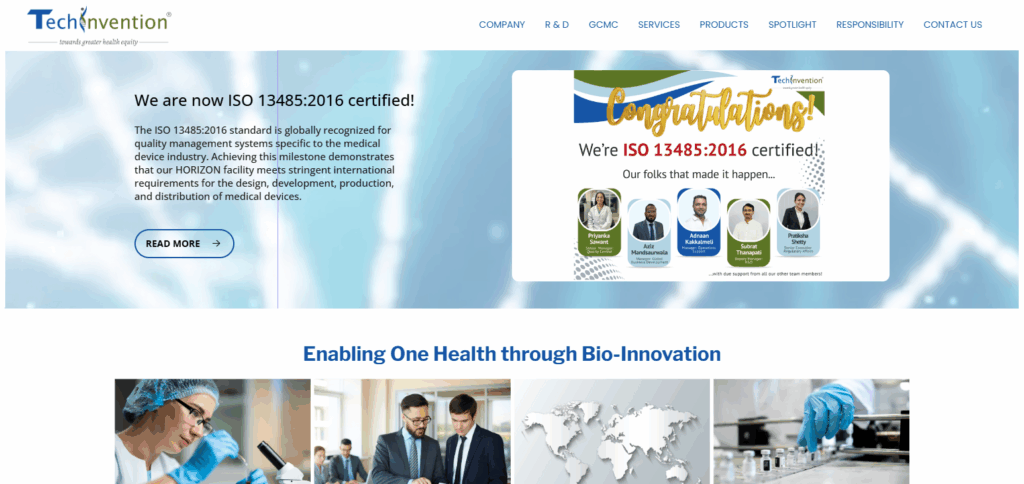In the article, I will discuss the How to Patent a Tech Invention. Securing a patent is fundamental to your innovation, whether it’s a new piece of software, a device, or a system of some sort.
This article will help you understand the various prerequisites needed in compiling the application and the actual submission itself, ensuring all legal requirements involved in the process of patenting the invention are comprehensively dealt with.
What is Tech Invention?
An invention of technology is a device, process, or system that is newly created or significantly improved upon, solving a problem or enhancing some methods as existing processes. It may be in form of software, hardware, algorithms, electronic devices, or other advanced engineering solutions.

Each tech invention may be different in features from other inventions in the area due to phenomenon reason for uniqueness added by the developer.
Such changes are important for advancement of computing and telecommunication technology, robotics and many other fields. Such inventions of technology must be patented to prevent the loss of right for maintaining the exclusive use of such engineered marvels.
How to Patent a Tech Invention

Securing a tech invention patent means obtaining legal ownership of the innovation wherein no one can utilize or trade it without your consent. Below is a suggested approach to patent a privacy-focused AI algorithm for crypto trading.
Example: Patent Process for a Privacy-Focused AI Trading Algorithm
Conduct Prior Research
Make sure your algorithm does not already exist through prior searches and existing patents.
Check Google Patents, USPTO, WIPO, or other similar databases for non-existing crypto-associated technology.

Document the non-existing features like privacy-enhanced algorithmic AI automation and decentralized adaptability.
Prepare a Detailed Patent Application
Draft a technical memorandum detailing the class AI algorithm and how it interacts with the trading environment to enhance privacy.
Present supporting materials with operational logic, flowcharts, and system architecture diagrams to elucidate the technological marvel.
Explicitly delineate the claims and boundaries of the patent (features making the algorithm patent eligible).
Choose the Right Patent Type
Utility Patent: If the NFT or VFT brings out a tangible new use to technology.
Design Patent: If the novel aspect is in the graphical interface of managing crypto portfolios.
Provisional Patent: Fast and simple safeguarding while working on the complete proposal.
File the Patent Application
Reach out to a patent office like USPTO (U.S.), EPO (Europe) or a local one and file the application.
Make necessary payments and monitor the status of the evaluation for the application.
Think about international patent applications (PCT filing) while focusing on global marketing.
Patent Defense and Commercialization.
Provide clarifications for examiner’s queries or rejections.
Grant licenses of your patent to crypto trading exchanges or financial services specializing in privacy.
Protect the patent and defend against its infringement by monitoring the market or suing for infringement where necessary. Would you prefer me to outline step-by-step instructions for obtaining patents for inventions based on blockchain technology or applications powered by AI? I can further fine-tune the presentations intended for patent offices, if you want.
Other Place Where to Patent a Tech Invention
European Patent Office (EPO)
The European Patent Office (EPO)is a significant body that allows for a unified application to be made for patent protection across Europe.

It simplifies the process of obtaining patents for technological inventions by enabling an inventor to defend their innovation in different European nations through a single application.
One distinctive benefit of the EPO is its broad examination procedures which enhances the reputation and enforceability of patents issued throughout the member states.
Japan Patent Office (JPO)
The Japan Patent Office (JPO) plays a vital role in protecting technology inventions in one of the world’s most innovative economies.

It has a fast and efficient examination system, appealing to tech developers who need quick patent approval.
One of the unique strengths of the JPO is its emphasis on high-quality examination standards which ensures that inventors are provided with strong, enforceable patents in Japan’s austere technology market.
Additional Tips for Tech Inventors
Provisional Patent First
A provisional application allows you to set an early filing date to refine your invention in the next 12 months.
Best Practices of Record Keeping
If challenged, detailed documentation of every development stage, including sketches, code, tests, and timestamps, can prove originality.
Hire a Patent Attorney
The right attorney can draft solid claims which strategically increase the probability of success for your application.
No Public Disclosure
Refrain from selling, pitching, or publishing before filing as public disclosure can influence patent rights.
Think About Global Protection
Consider systems like the Patent Cooperation Treaty (PCT) to globally protect your invention, not just in one country.
Track Competitors on a Regular Basis
Follow the filing of patents in your domain to track industry developments and avoid infringement.
Commercialization Strategy Planning
Have a well-defined plan to extract business value from the patent through licensing, production, or entering the market.
Maintenance Responsibilities
Patents expire without periodic fees. Pay attention to deadlines for each jurisdiction where rights are held.
Risk & Considerations

Excessive Spending
Every business has a budget. For a new patented invention, the budget should cater for filing costs, lawyer fees and even ongoing costs associated with maintaining the patent. These factors can all add up to create significant expenses.
Time Consuming
Even after all the guidelines are followed, the process still remains somewhat arbitrary. Enforced patents usually take years just to receive a stamp of approval. During this stagnant period, invention ideas remain vulnerable.
Weak Implementation Draws Loss
Novelties can garner a lot of attention and expenditure, but without a sound step-by-step strategy, you can be rejected by patent offices. Patent claims by third-leg filter claiming options, rendering them void if lack novelty and the necessary steps.
Public Knowledge Risk
If the invention attains a patent too early, detailed study becomes the norm. Instead of bypassing, foes within the same industry may find ways to exploit loopholes and work around the charge for infringement.
Shift of Burden Policy
Infringing on someone’s work is viewed as a red line in the industry. Confirming patents via monitoring the market can become extremely tedious. After all, one does not stop inversing legally.
Scope Restriction Policy:
Opens for a company’s ideas are seen as restricted with little tolerance for creativity forcing companies to stay claim-restrained. Protection of patents can be soft or narrow ensuring scope restriction of claim free inventions.
Risk of Losing Tech Edge:
Strategies are essential to utilize in order to make these projects worthwhile. Once automated reduction technology is incurred in the market enable tech to pre matured cause consequences become faster drawn for adaptation enabling traditional methods we were in survive longer eroded lead.
Pros & Cons
| Pros | Cons |
|---|---|
| Grants exclusive rights to your invention | High filing and legal costs |
| Increases business value and credibility | Lengthy approval process (often years) |
| Blocks competitors from using your technology | Public disclosure of invention details |
| Attracts investors and licensing opportunities | Enforcement is your responsibility |
| Can lead to revenue through licensing | Limited protection scope if claims are weak |
| Protects innovation in international markets | Risk of rapid tech obsolescence |
Conclusion
To summarize, obtaining a patent for a technological invention protects the innovation and grants exclusive rights to the owner of the invention.
Following the procedures, documenting the ideas in detail, and filing an application, will enhance the expect to attain success. Whether single-handedly pursued or worked on alongside a patent attorney, action taken at the first instance will help in legally protecting the invention during its market lifecycle.










